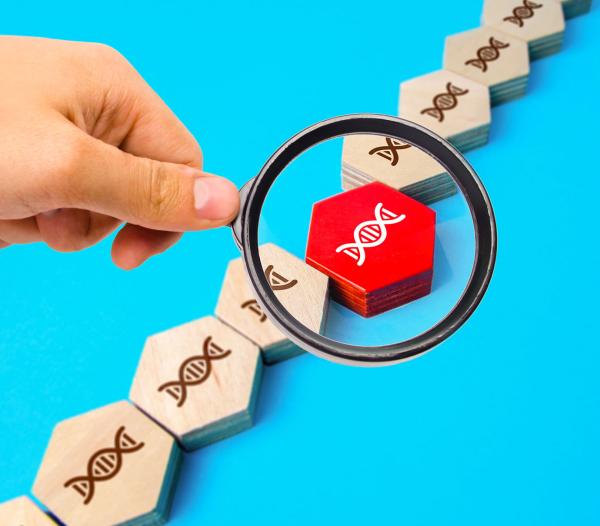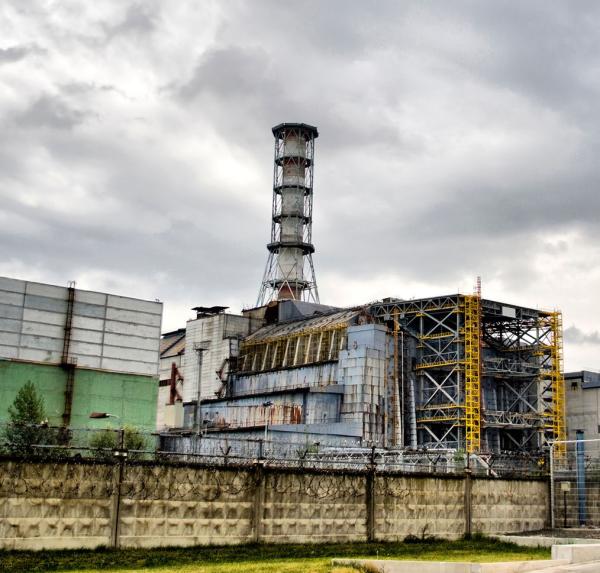Decoding Cancer’s Genetic Blueprint
IRP’s Stephen Chanock Elected to National Academy of Medicine

IRP senior investigator Stephen Chanock was elected to the National Academy of Medicine in 2024 for his contributions to our understanding of risk factors that drive the development of cancer.
IRP senior investigator Stephen J. Chanock, M.D., grew up on the NIH campus, spending many weekends hanging around his father’s lab. Robert M. Chanock, M.D., worked at NIH for 50 years, during which he identified the human respiratory syncytial virus and was elected to the National Academy of Medicine (NAM) for his discoveries. Now, following in his dad’s footsteps, the younger Dr. Chanock has been elected to the NAM for his contributions to our understanding of how inherited genetic variation and environmental factors contribute to the risk of developing cancer.
Despite his upbringing, Dr. Chanock says science was the last thing he wanted to study as a young man. Already an accomplished pianist and harpsichordist, he decided to study musical composition at Princeton. However, he realized he didn’t have the special talent necessary to be a star. He decided, instead, to follow his father into science after all and applied to medical school.
“My father was very good, very quiet about it,” he remembers, “but he did promise me a harpsicord when I graduated.”
Dr. Chanock ended up focusing on cancer and pediatrics due to two formative experiences. First, he watched his undergraduate roommate, who had hemophilia, cope with both HIV and hepatitis C acquired as a result of contaminated blood products used for his treatment. Second, his brother, Foster, passed away from a rare form of cancer in his mid-20s. Dr. Chanock would ultimately return to NIH in 1991 and take a position working in the same clinical unit where his brother had been treated and passed away.
Now as Scientific Director of the Division of Cancer Research and Epidemiology (DCEG) at NIH’s National Cancer Institute (NCI), Dr. Chanock has been trying to get to the bottom of why some people get cancer and others do not, even when they carry inherited genetic risk factors.
To find answers, Dr. Chanock, along with teams of scientists around the world, began conducting genome-wide association studies (GWAS), in which they scan DNA markers across the entire genome from thousands of volunteers to identify variations that are associated with a particular disease or trait. He has led large collaborative teams and contributed to the discovery of more than 1,500 regions in the genome that influence susceptibility to cancer. To better understand what these genetic markers were revealing, he established the Laboratory of Translational Genomics within DCEG, which conducts research to understand the underlying biology of why certain genetic variants contribute to cancer risk.

Dr. Chanock is exploring the confounding puzzle of why the same genetic alterations eventually lead to cancer in some people but not others.
Notably, in a 2010 GWAS, Dr. Chanock’s team observed that some people whose DNA was analyzed for the study had large-scale rearrangements, duplications, or missing pieces of parts of the chromosomes DNA is organized into. However, when the researchers analyzed the blood of individuals with these genetic changes, they turned out to only be present in a fraction of cells — a phenomenon called ‘clonal mosaicism.’
“Initially, we thought we had quality control errors in our data, but the finding turned out to be very informative,” Dr. Chanock says. “A small percentage of people are walking around with a subset of blood cells that have anomalies in their DNA similar to those you find in cancer cells, but they don’t have cancer. However, clonal mosaicism could be a risk factor for developing certain cancers. It is potentially an important biomarker and also illustrates how our genomes slowly fall apart with age, something of interest to all.”
“I’ve spent a lot of my time trying to characterize how and in what way the genome evolves as we age and how you either tolerate it or you don’t,” Dr. Chanock adds. “We’re trying to ferret out when a genetic anomaly can be tolerated and when it is really worrisome.”
While many of his studies have focused on why individuals may have higher or lower cancer risks, Dr. Chanock is also applying his talents at the population scale by examining how high body weight, diet, smoking, and exposure to certain environmental factors affect cancer risk. Findings from such studies provide crucial information to public health leaders tasked with choosing safe exposure levels to certain chemicals or enacting measures designed to improve public health.

Dr. Chanock has used the accident at the Chernobyl nuclear power station, pictured above, to explore the effects of radiation exposure on risk for cancer.
One exposure Dr. Chanock has studied for many years is ionizing radiation, particularly among individuals living near the Chernobyl nuclear power station in Ukraine when it exploded in 1986. While most cancers result from many small insults to our DNA that accumulate over a lifetime without anyone’s knowledge, radiation accidents are highly informative because the effects of the cancer-inducing exposure can be assessed with respect to distinct timing, which enables us to better understand how the cancer originated.
“Exposure to radiation from this kind of a source is discrete, so we know exactly how many weeks or months they were exposed,” Dr. Chanock explains. “If someone gets cancer, we can map it back to exposure around the date of the event, April 26, 1986, until they left the site.”
The breadth of Dr. Chanock’s research portfolio reflects his innate interest in understanding the biological roots of cancer, which can, in turn, be the foundation for important public health steps to prevent or intervene early. On his wall, he has a poster with a quote from the Roman poet Virgil that has guided his career: “The noblest motive is the public good.”
Dr. Chanock doesn’t just help advance research on cancer, though. For 25 years, he has spent one week every August as the medical director at Camp Fantastic, an NIH program that lets kids with cancer be kids again.

Dr. Chanock with children at Camp Fantastic
“That has always been very special, and it resets my compass every year,” he says. “After spending an intense week with 100 kids with different kinds of cancer, you really see what’s going on. And I think, ‘Darn it, we need to do better!’ I always go back to my lab with 500 new ideas.”
“And you know, I'm still a kid at heart in many ways,” he adds. “All pediatricians are. It's never rooted out — that's why we became pediatricians. We wink and smile at each other because we all know exactly what it means to be a pediatrician.”
Subscribe to our weekly newsletter to stay up-to-date on the latest breakthroughs in the NIH Intramural Research Program.
Related Blog Posts
This page was last updated on Wednesday, April 9, 2025
